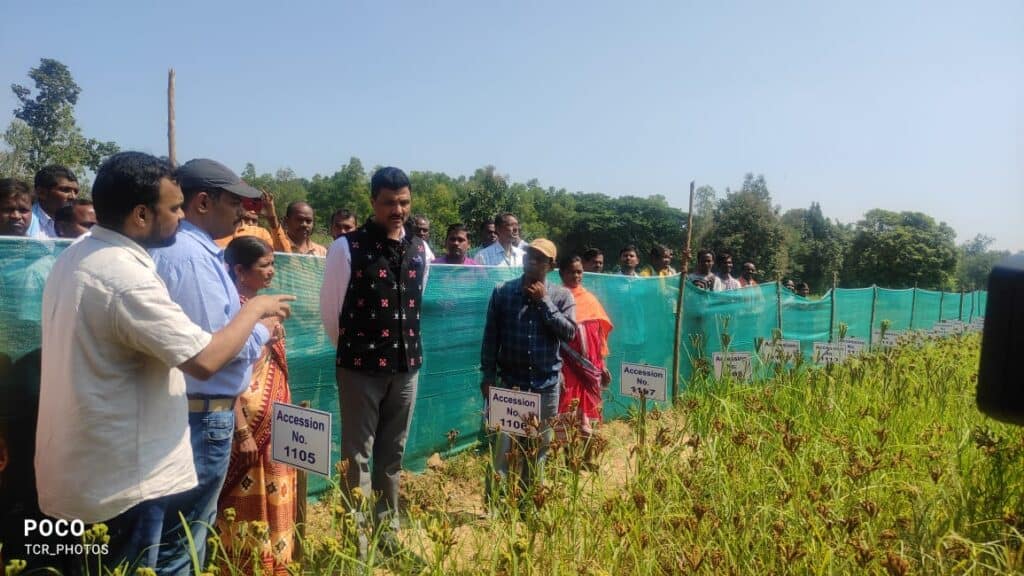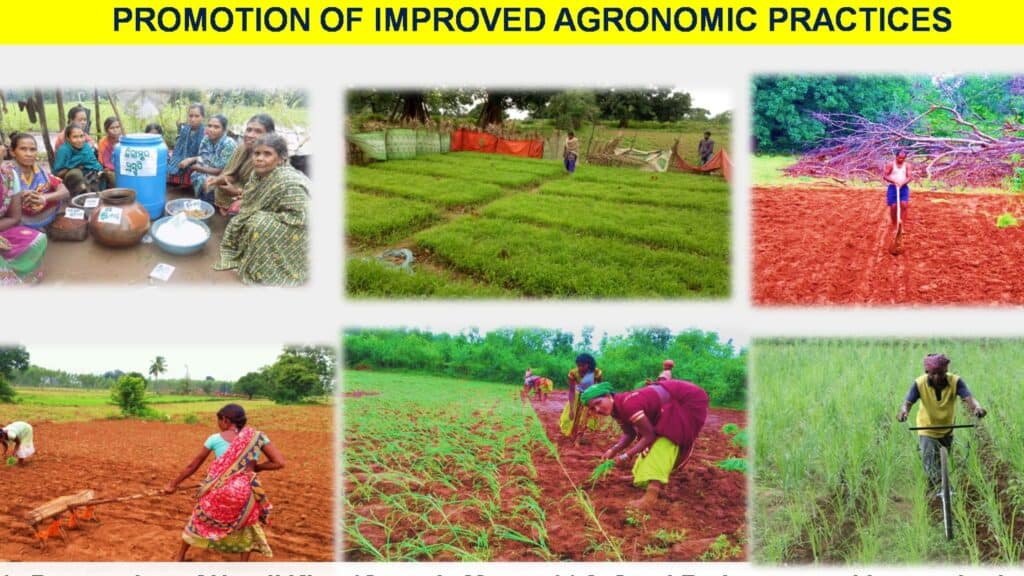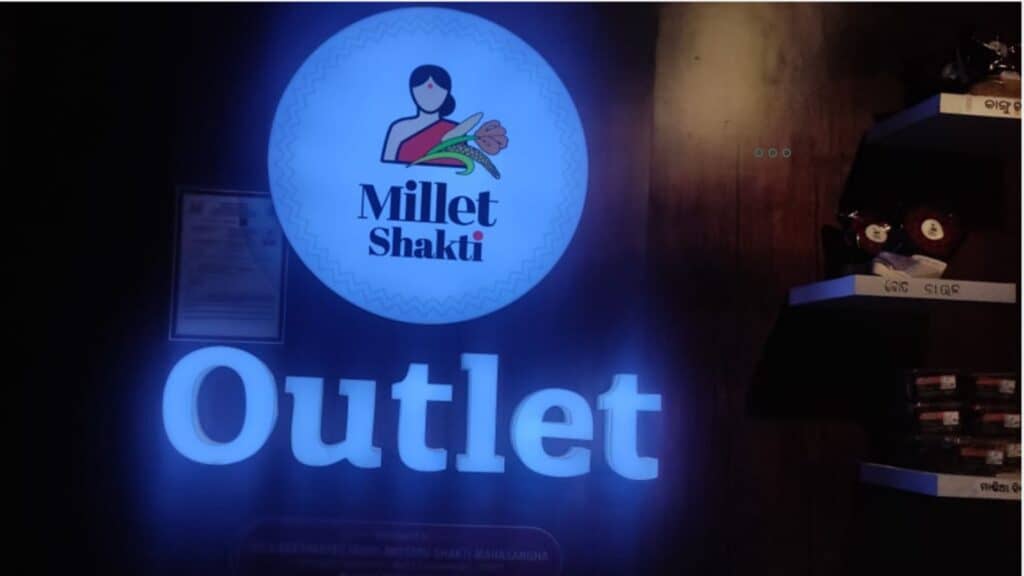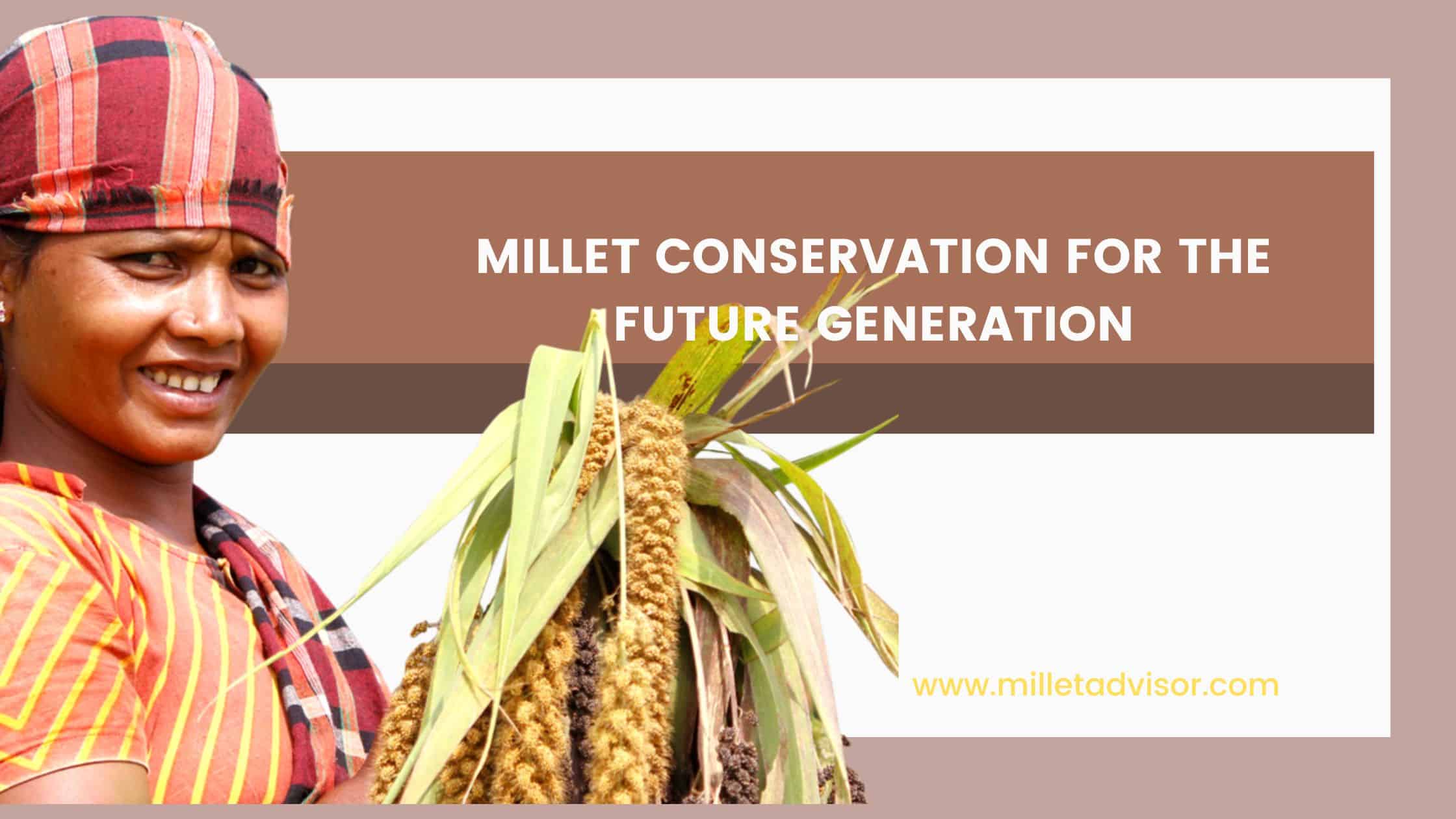Table of Contents
Strategies for Millet Conservation:
Selective utilization of specific crops and varieties in these modern days has threatened the agro-biodiversity leading to the loss of many potential landraces and subsequently affecting the nutritional security of the people. The only way to conserve the millet landraces is to bring them into use and build a viable ecosystem around them. Odisha Millets Mission is taking the lead in the conservation of millets by involving farmers.
The strategies to conserve the millet landraces are by following the 4 C’s:
- Conservation
- Cultivation
- Consumption
- Commercialization
Conservation:
The strategies for the conservation of millets involve seed collection, multiplication, seed distribution, farmer-to-farmer seed exchange, and conducting Participatory varietal trials(PVT) involving farmers, especially women farmers. The promising potential landraces are collected from the locality or nearby places. The seeds are properly cleaned, dried, and stored in the Community Seed Centres. On the arrival of the monsoon season, the seeds are distributed to the farmers in the community. The farmers are selected based on their interest to do seed multiplication. The farmers are properly made aware of the millet seeds in the community gathering. A proper register is maintained for the seed distribution.
Once the seeds are distributed, the best agronomic practices are followed to ensure better yield. After the harvesting of the crops, the seeds are stored in the Community seed center. The farmers are paid as per the price fixed in the village meeting. The journey continues to save the landraces of millets.

Visit of Principal Secretary to Govt. DA&FE, Odisha at 124 Finger Millet Genotypes trial at Kundra Block, Koraput
The millet seed system for landraces is an innovative initiative of Odisha Millet Mission for conserving agro-biodiversity. The Farmer Producer Organisations(FPOs) and Women Self Help Groups are taking part in bringing the landraces into the seed system. It has been marked that the performance of some landraces is even better than the released varieties. The farmers are getting better prices by selling their millet seeds in Odisha as well as in other states in India.
Cultivation:
One of the main reasons, farmers moving away from millet cultivation is not getting better yields and remunerative prices as compared to other crops. Before the launch of Odisha Millets Mission, most of the farmers were simply broadcasting the millet seeds and were getting around 2-3 quintals per acre. Farmers considered millets as the lazy crop as they go to the millet field twice, once on the day of sowing seeds and the second time on the day of harvesting.
From the year 2017-18, farmers started following the System of Millets Intensification (SMI), Line Transplanting/Line Sowing, where it was a marked significant increase in the yield of millets. Farmers reported getting yields of 8-12 quintals/acre. Happy moments were seen among the millet farmers when they received incentives for following the best agronomic practices. These initiatives of Odisha Millets Mission encouraged farmers to grow more millets in their fields.
The best thing, which made farmers come back to grow millets is the assurance of the market. The farmers were able to sell their produce at the Minimum Support Price (MSP).

Consumption:
The involvement of drudgery in the processing of millets has reduced the consumption of millets. Making millet flour or dehusking the millet grains takes a lot of time when it is done manually. A tribal woman says it takes about one hour to process one kilogram of Little Millet. To improve the consumption of millets, Odisha Millets Mission has taken many initiatives.
- Supplied OUAT Ragi Threshers to WSHGs.
- Supplied Pulverizers for making millet flour.
- A double deck grader-cum-aspirator has been supplied to the WSHGs.
- Capacity Building Training programs for WSHGs.
- Conducting of Millet Food Festival.
- Distribution of Ragi in the Public Distribution System (PDS).
- Including Millets in the Mid-day meals and ICDS Programmes.
Commercialization:
The millet ecosystem cannot sustain for a long time until a business is created. In view of this, the WSHGs are trained in processing millets and making value-added products. On convergence, Odisha Millets Mission is associated with Mission Shakti Department. The value-added products are branded in the name of ‘’Millet Shakti”. The millet products are in much demand in the state as well as in other states. Now, the Women’s Self-help Groups are making a good business out of millet products.

Conclusion: To conserve the millets for future generations, there is a need to focus on the conservation, cultivation, consumption, and commercialization of millets. Millets are the future next-generation crop that will address the food, feed, fuel, health, malnutrition, and most important issue climate change. Keeping in view the importance of millets, it’s time to conserve genetic resources and restore the genetic erosion of millets for sustainable agriculture.
Author: Tapas Chandra Roy, A Certified Farm Advisor on Millets, ‘Promoting Millets from Farm to Plate’ and an Author of the book -” Millet Business Ideas-Empowering Millet Startups”. In a mission to take the forgotten grains- Millets to Millions. To remain updated on my blogs on Millets please subscribe to my newsletter and for any queries please feel free to write to [email protected]


Very nice to know about the importance of millet for needs of the day ..
thanks
will keep in touch.